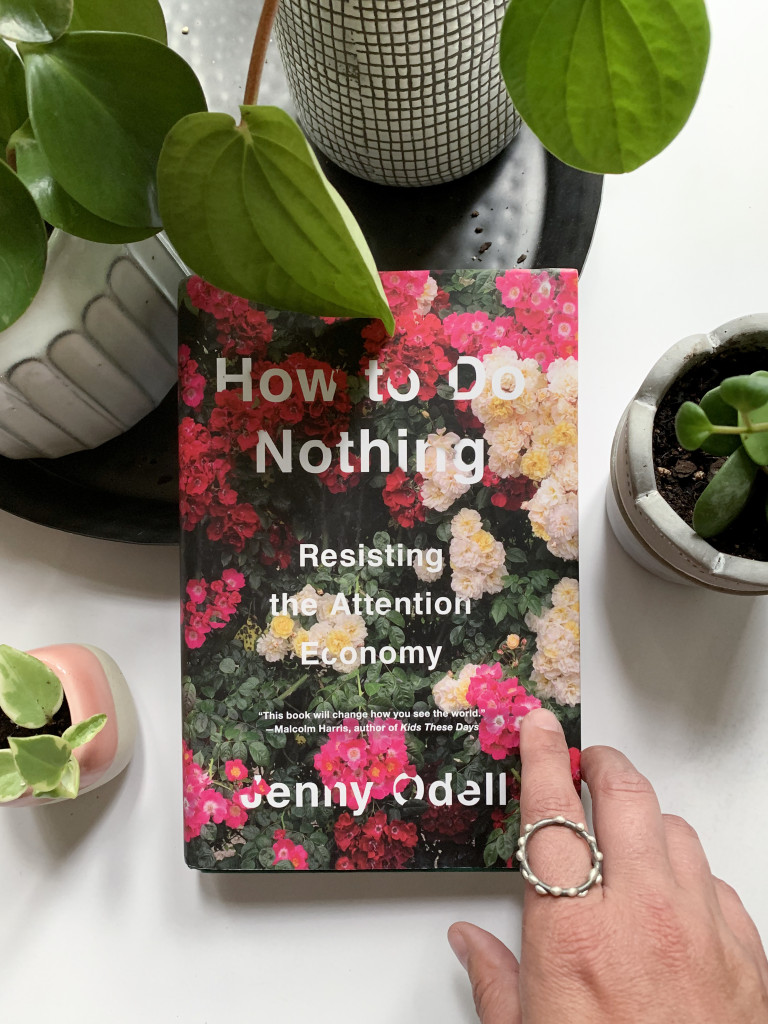
When I first came across How to Do Nothing: Resisting the Attention Economy, I thought it would be like Digital Minimalism, if that book had been written by a biracial woman artist. But How to Do Nothing is so much more nuanced and meandering (in a good way) than Digital Minimalism, probably because it was written by a biracial woman artist.
Rather than a call to quit social media or put down our phones, Jenny Odell instead implores us to shift our attention to the world around us. Drawing from sources in the arts, philosophy, and activism, this book isn’t so much a guide to decreasing our dependance on technology as it is a treatise on how to live in the world we currently inhabit.
Since the book covers so much ground, I won’t try to summarize it here. Instead, I’ll just share a few of my own key takeaways and tell you that you should very much go read this one yourself!
I will admit that, when I started this book, I did bring the same healthy skepticism that I brought to Digital Minimalism (and all of Cal Newport’s other books). Like Newport, Odell is employed by a university, and thus has the time and space to think (and write) deep thoughts that many who are simply trying to make ends meet don’t seem to have. But unlike Newport, Odell does take the time to point out her own privilege, and address why she thinks it’s critical to tackle the issues of the attention economy in ways that benefits all and not just a privileged few.
Though as someone who did teach at a university and decided that world wasn’t for them, I can attest that academia isn’t always the perfect world of deep thought and scholarly research we imagine it to be, and that privilege comes with it’s own strings.
For my part, there were two things that really resonated with me while reading How to Do Nothing.
First, Odell’s experience of learning to see the birds around her (for no purpose other than pure pleasure) reminded me of my own growing houseplant collection over the past few months. It also reminded me of how hard it is to resist turning our offline passions into online sharing in the name of growing followers and influence. While I have blogged about my plants here, and I do occasionally post images of the plants in my studio on Instagram, I must admit that it’s taken me quite a bit of restraint to not go into overshare mode with my newfound plant obsession.
I can’t tell you how many times I contemplated creating an Instagram account specifically for my plants (that was before I totally soured on IG) or documenting and sharing every little moment of plant change. But I resisted, specifically because one of my goals with my plants was to cultivate a (mostly) offline, real world, physical hobby.
The second piece that really resonated with me was Odell’s description of context-collapse. Bringing the conversation back to social media, Odell tries to make sense of why her Twitter feed brings her so much distress, and one of the concepts she shares is this idea of context-collapse. Twitter (and FB, and, in its own visual way, Instagram) shares headlines and snippets and unrelated stories without any sense of context, history, or nuance.
While I’ve done a lot of reading (and reflecting) lately about social media and it’s impact on my mood and daily life, what was missing in all of that was the idea of context-collapse.
Because, as it turns out, I love context. I love research and history and detail and nuance.
When I graduated from my MFA program, I had over 60 books that had to be returned to the school library, most related to my thesis. (And keep in mind, this was a thesis in visual arts, which only required about ten pages of actual writing to accompany my body of work.) And my love of research, that desire to dive deep, hasn’t changed since then.
It’s just that social media obscured it, without me even realizing it.
It’s no surprise that my default replacement for the time I was spending on social media has been to read more. Or that, in trying to make sense of my own (and our culture’s) relationship to social media and technology, I haven’t settled on reading only one book, but instead am seeking out many books with lots of different perspectives.
And while I continue to resist the simple notion that books are “deep” and social media is “shallow” (because I think that concept has some very patriarchal undertones, particularly in the way we value the written over the visual and the mind over the body), Odell helped me understand that it is actually a lack of context that is creating the frustration I feel with time spent on social media.
As someone who runs her one business that exists in a large part online, and who makes a living selling her art, How to Do Nothing doesn’t provide any meaningful solutions for how to resist the attention economy while still trying to make a living. (Though to be fair, Odell never makes that promise, and in many cases is decidedly anti-capitalist, a position that comes, as she admits, from her privilege.) So as an artist and business coach, I’m still left to grapple with those questions on my own.
But at the same time, How to Do Nothing is a beautiful, poetic exploration of what it means to not only pay attention in our modern world, but to truly exist in that world, which makes it a worthwhile read for artists in particular, but also for all humans who want to experience life outside of a tiny, glowing screen.
Oh, and since I do need to make a living with my art, I should mention that the ring I’m wearing in the picture here is available in my online store!
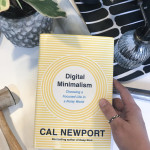
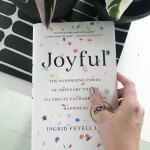
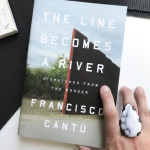
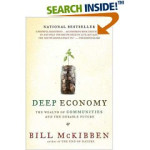
Leave a Reply